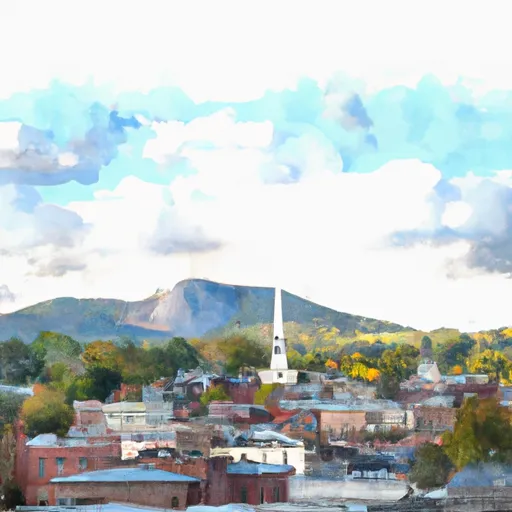-
 Snoflo Premium
Snoflo Premium
Get unlimited access to all our content
With no Ad interruptions! - Start Your Free Trial Login with existing account
Montpelier
Eden Index
Climate
7.6
•
Recreation
3.1
•
Community
3.6
•
Safeguard
5.0/10

Montpelier, the capital city of Vermont, is nestled in the heart of the Green Mountains. It experiences a humid continental climate with cool summers and cold winters. Summers are pleasant, with average temperatures ranging from 66°F (19°C) to 81°F (27°C), while winters can be frigid, with temperatures ranging from 15°F (-9°C) to 30°F (-1°C). Snowfall is abundant, with an average of 88 inches per year, making Montpelier a haven for winter enthusiasts.
Situated on the Winooski River, Montpelier exhibits a diverse hydrology. The river provides ample opportunities for outdoor recreation, including fishing, kayaking, and canoeing. Moreover, Vermont's renowned fall foliage attracts hikers, bikers, and nature lovers to explore the picturesque trails and scenic beauty of the surrounding mountains.
Hubbard Park, located atop a hill in Montpelier, offers visitors a chance to enjoy nature with its vast trail network, picnic areas, and stunning views. Additionally, the North Branch Nature Center provides educational programs, birdwatching, and guided walks for nature enthusiasts.
In summary, Montpelier's climate offers distinct seasons, including snowy winters and pleasant summers. Its hydrology, centered around the Winooski River, provides opportunities for outdoor activities, while its proximity to the Green Mountains grants access to breathtaking landscapes and recreational opportunities throughout the year.
What is the Eden Index?
The Snoflo Eden Index serves as a comprehensive rating system for regions, evaluating their desirability through a holistic assessment of climate health, outdoor recreation opportunities, and natural disaster risk, acknowledging the profound impact of these factors on livability and well-being.
Climate Health Indicator (CHI): 7.6
Montpelier receives approximately
1024mm of rain per year,
with humidity levels near 79%
and air temperatures averaging around
7°C.
Montpelier has a plant hardyness factor of
4, meaning
plants and agriculture in this region thrive during a short period during spring and early summer. Most
plants will die off during the colder winter months.
By considering the ideal temperature range, reliable water supplies, clean air, and stable seasonal rain or snowpacks, the Climate Health Indicator (CHI) underscores the significance of a healthy climate as the foundation for quality living.
A healthy climate is paramount for ensuring a high quality of life and livability in a region, fostering both physical well-being and environmental harmony. This can be characterized by ideal temperatures, reliable access to water supplies, clean air, and consistent seasonal rain or snowpacks.
Weather Forecast
Streamflow Conditions
Area Rivers
Snowpack Depths
Reservoir Storage Capacity
Groundwater Levels
Recreational Opportunity Index (ROI): 3.1
The Recreational Opportunity Index (ROI) recognizes the value of outdoor recreational options, such as parks, hiking trails, camping sites, and fishing spots, while acknowledging that climate plays a pivotal role in ensuring the comfort and consistency of these experiences.
Access to outdoor recreational opportunities, encompassing activities such as parks, hiking, camping, and fishing, is crucial for overall well-being, and the climate plays a pivotal role in enabling and enhancing these experiences, ensuring that individuals can engage in nature-based activities comfortably and consistently.
Camping Areas
| Campground | Campsites | Reservations | Toilets | Showers | Elevation |
|---|---|---|---|---|---|
| Silver Lake State Park | 40 | 1,385 ft | |||
| Eden Rec Area | None | 1,251 ft | |||
| Allis State Park | 26 | 1,875 ft | |||
| Smugglers Notch State Park | 34 | 1,934 ft | |||
| Little River State Park | 100 | 731 ft | |||
| Gifford Woods State Park | 48 | 1,606 ft | |||
| Calvin Coolidge State Park | 60 | 1,684 ft | |||
| Quechee State Park | 55 | 638 ft | |||
| Elmore State Park | None | 1,637 ft |
Nearby Ski Areas
Catastrophe Safeguard Index (CSI):
The Catastrophe Safeguard Index (CSI) recognizes that natural disaster risk, encompassing floods, fires, hurricanes, and tornadoes, can drastically affect safety and the overall appeal of an area.
The level of natural disaster risk in a region significantly affects safety and the overall livability, with climate change amplifying these risks by potentially increasing the frequency and intensity of events like floods, fires, hurricanes, and tornadoes, thereby posing substantial challenges to community resilience and well-being.
Community Resilience Indicator (CRI): 3.6
The Community Resilience Indicator (CRI) recognizes that education, healthcare, and socioeconomics are crucial to the well-being of a region. The CRI acknowledges the profound impact of these elements on residents' overall quality of life. By evaluating educational resources, healthcare accessibility, and economic inclusivity, the index captures the essential aspects that contribute to a thriving community, fostering resident satisfaction, equity, and social cohesion.

